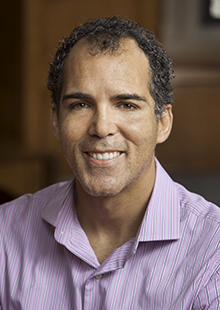This is the latest post in our series on the progressive roots of school choice.

Credit James Forman Jr. with the best account yet of the center-left roots of the school choice movement. Credit his stint as a public defender for being the spark.
 Forman, now a Yale law professor, said the district “alternative” schools serving his juvenile clients in Washington D.C. 20 years ago were giving them the least and worst when they needed the most and best. He began exploring options like charter schools, only to be told by some folks that school choice couldn’t be trusted because of its segregationist past.
Forman, now a Yale law professor, said the district “alternative” schools serving his juvenile clients in Washington D.C. 20 years ago were giving them the least and worst when they needed the most and best. He began exploring options like charter schools, only to be told by some folks that school choice couldn’t be trusted because of its segregationist past.
Forman knew about the “segregation academies” some white communities formed to evade Brown v. Board of Education. But he knew that wasn’t the whole story. Among other reasons, he was the son of James Forman, a leader of the Student Nonviolent Coordinating Committee, the group whose courageous members became known as the “shock troops” of the civil rights movement.
Wait, he thought, recalling stories his parents told him about Mississippi Freedom Schools. Wasn’t that school choice?
“It seemed impossible to me to think that over all of those years, African-Americans had never organized themselves to try to create better (educational) opportunities outside what the state was providing them,” Forman told redefinED in the podcast interview below. “So that was my idea. My thesis was there had to be an alternative history, there had to be a history of African Americans who were not relying on the government and were trying to organize themselves to create schools to educate their children.”
The result of Forman’s research is “The Secret History of School Choice: How Progressives Got There First.”
The 2005 paper traces the progressive movement for educational freedom from Reconstruction, to the civil rights movement, to the “free schools” and “community control” movements of the 1960s and ‘70s. A century before many activists were using the term “school choice,” it notes, black churches were making it happen. Decades before conservative Gov. Jeb Bush was pushing America’s first statewide voucher program, liberal intellectuals were promoting the notion in The New York Times Magazine.
A decade later, “The Secret History of School Choice” remains a must-read for anyone who wants a fuller, richer picture of choice’s beginnings. But Forman, who co-founded a charter school named for Maya Angelou, hopes progressives in particular see the light.
They ignore the history of school choice, and their role in shaping it, at their own peril, he said. Believing, wrongly, that it’s right-wing can result in it becoming just that. If progressives aren’t at the table, he suggested, they can’t bring their values to bear in shaping policy. In his view, it’d be good if they did.
Forman, for example, believes per-pupil amounts for many voucher and tax credit scholarship programs are too low for the low-income students they’re intended to help, reflecting conservative positions that education funding as a whole is bloated. (Other left-leaning choice supporters have raised concerns that modern voucher programs are too cheap.) Equity concerns surface in other ways, with few publicly supported, private school choice programs employing the sliding scales for family income and scholarship value that liberal voucher supporters in the ‘60s and ‘70s thought crucial.
“Our understanding of the history influences the direction that the issue goes,” Forman said. “If people who have an equality orientation and a civil rights orientation see themselves as on the outside of the movement for school choice, then the only people who are going to be left are people who have different motivations. … So the question is going to be, who owns the movement? Who directs the movement? Who is dominant? Whose educational vision leads the way?”
Forman said perceptions about choice will change as more and more low-income and minority parents embrace it. But the narrative won’t tack back to fully mesh with the reality of the movement’s diverse roots, he said, unless other things change too. One obvious hurdle, he said, is how the movement’s leadership ranks are “almost lily white.”
“Every time I go to a (school choice) conference, I am appalled by how invisible almost the folks of color can be at the top level of leadership,” Forman said. “That’s a problem.”



It is good to see the funding issue getting discussion. Low voucher values are not primarily the resutl of intended “conservative” policy. It is true that some argue for choice because it will save money, but such an argument is short-sighted. The main explanation for low voucher values (and low charter values) lies primarily in Democratic opposition to these programs. Supporters agree to low values to get a foot in the door and then fail to fight for equity in financing. Over and over, supporters have been content to accept inadequate programs which they say “eventually” will get better. As a result, none of the many programs provides a real test of choice. BTW, the next D legislator to fight for adequate voucher funding will be the first.
Hi George, thanks for taking time out to comment. I can’t say I know enough about voucher and tax credit scholarship programs to know why so many of them (all of them?) set per-pupil funding amounts below, and often far below, per-pupil amounts in public schools. Perhaps someone else with more knowledge here can weigh in. But I have mixed feelings based on what I know of the tax credit scholarship program in Florida. Here the value of the scholarship, $5,677 this year, is pegged to a set percentage of per-pupil operational spending in public schools. On the one hand, I have no doubt this is enough money to open many, many private school doors to low-income parents. (More than 1,500 private schools in Florida accept scholarship students this year). On the other, it doesn’t make sense to me that the students who need the most help (and test data shows scholarship students tend to be the ones who struggled the most in public schools) get far less funding than their peers in district and charter schools. I can’t help but think those struggling, low-income students would have access to even more options, and even more high-quality options, if funding was more equitable. The point I think Prof. Forman was making is that if liberals/progressives/Democrats knew that many of their ideological predecessors strongly supported choice, more of them would be in the mix shaping choice policy – and perhaps more of them could make pitches for higher funding levels and/or sliding scales.